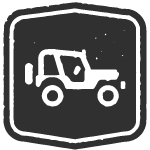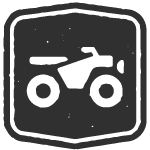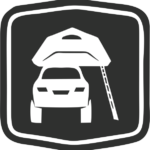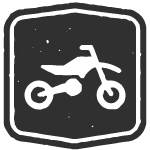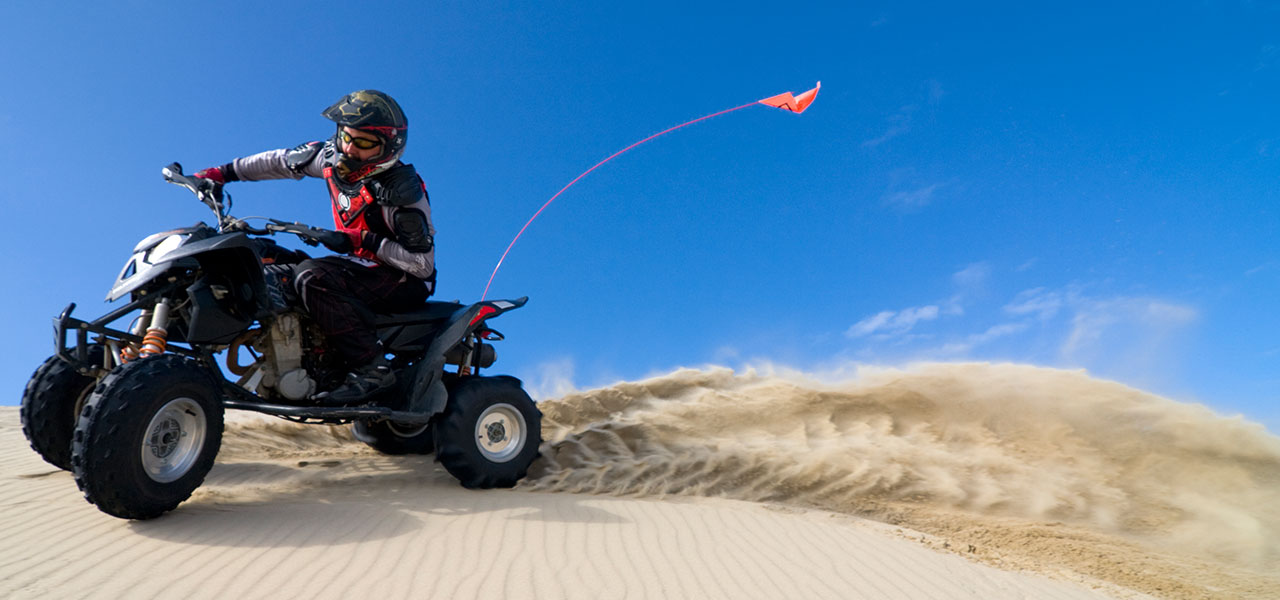
Sand Duning


Minimize your impact by traveling only in areas open to four-wheel drive vehicles. Learn more about our RIDE ON campaign.
TRAVEL RESPONSIBLY
Travel responsibly on designated roads, trails and areas. Travel only in areas open to off-highway vehicles (OHVs).
- In areas adjacent to sand dunes, travel on designated roads and trails.
- Obey all speed limits. Reduce speed below 15 miles per hour near campgrounds, campsites and people.
- Dunes are constantly changing. Use stationary landmarks or a GPS to help you navigate.
- Watch for ravines, depressions (witches eye) and steep drop offs (slipface and razorbacks) formed by blowing sand.
- Use a spotter when jumping hills or dunes.
- Scout areas before traveling at higher speeds.
- Reduce speed in blowing sand or whiteout conditions.
- In coastal duning areas, watch for quicksand in low areas between dunes.
- Comply with all signs and respect barriers.
- Buddy up with two or three riders, reducing vulnerability if you have an accident or breakdown.
- Designate meeting areas in case of separation.
- Listening to headphones or ear buds can make it difficult to hear and communicate with other recreationists. In some areas it is illegal to operate OHVs with both ears covered.
- Don’t mix riding with alcohol or drugs.
RESPECT THE RIGHTS OF OTHERS
Respect the rights of others, including private property owners, all recreational trail users, campers and others so they can enjoy their recreational activities undisturbed.
- Be considerate of others on the dunes.
- Leave gates as you find them.
- If crossing private property, be sure to ask permission from the landowner(s).
- Do not idly ride around in camping, picnicking or residential areas.
- Make no wake – slow down in “Courtesy Speed Zones” around crowds and camping areas.
- Keep the noise down.
EDUCATE YOURSELF
Educate yourself prior to a trip by obtaining travel maps and regulations from public agencies, planning for your trip, taking recreation skills classes and knowing how to operate your equipment safely.
- Obtain a map (motor vehicle use map where appropriate) of your destination and determine which areas are open to motorized vehicles.
- Make a realistic plan and stick to it. Always tell someone of your travel plans.
- Contact the land manager for area restrictions, closures and permit requirements.
- Check the weather forecast before you go. Prepare for the unexpected by packing a small backpack full of emergency items.
- Wear a helmet, eye protection and other safety gear when riding dirt bikes or ATVs.
- Buckle up when riding sand rails, side-by-sides/UTVs and four wheeling vehicles.
- Sand rails, side-by-sides/UTVs and four-wheeling vehicles should always carry a fire extinguisher.
- Know your limitations. Watch your time, fuel and energy.
- Take an OHV safety-training course. They provide fast-paced hands-on training on vehicle operation and safety.
- Make sure your OHV is mechanically up to the task. Be prepared with tools, supplies, spares and a spill kit for trailside repairs.
AVOID SENSITIVE AREAS
Avoid sensitive areas such as meadows, lakeshores, wetlands and streams. Stay on designated routes.
- Avoid dunes adjacent to rivers, streams and lakes.
- Do not disturb historical, archeological or paleontological sites.
- Avoid running over plants; it’s damaging to your vehicle and the environment.
- Avoid “spooking” wildlife you encounter and keep your distance.
- Motorized and mechanized vehicles are not allowed in designated Wilderness Areas.
DO YOUR PART
Do your part by modeling appropriate behavior, leaving the area better than you found it, properly disposing of waste, minimizing the use of fire, avoiding the spread of invasive species and restoring degraded areas.
- Don’t litter in the dunes! Blowing sand hides trash only to reappear later.
- Carry a trash bag on your vehicle and pick up litter left by others.
- Practice minimum impact camping by using established sites and camping 200 feet from water resources and trails.
- In areas without toilets, pack solid waste out. Sand has no viable microorganisms to break down human solid waste.
- Spark arrestors are required on all OHVs traveling on public lands.
- Prevent unnecessary noise created by a poorly tuned vehicle or revving your engine.
- Use proper silencers on exhausts that meet regulatory decibel levels.
- Before and after a ride, wash your OHV and support vehicle to reduce the spread of invasive species.
- Build a sand duning community. Get to know other types of recreationists that share your favorite dunes.




